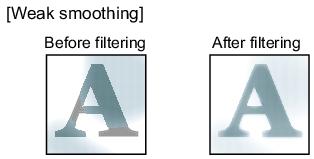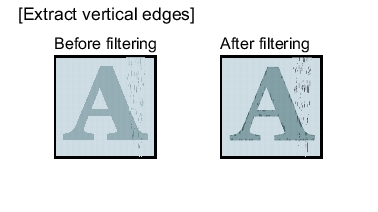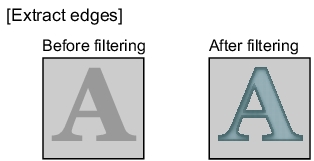Filtering Required for Stable Measurement
Owing to the noise, non-uniformity and lower contrast of camera images, the images shall be processed in advance, into measurement images in the case of unstable measurement.
Search Unstable Conditions
If measurement images are non-uniform and searching and locating are unstable, "Weak smoothing", "Strong smoothing" and "Median" are effective.
"Weak smoothing" and "Strong smoothing" are used to fuzzily the images such that non-uniformity is processed obscurely. As compared to smoothing, "Median" enables non-uniformity to become obscure without needing to fuzzily the edges.
When Measured Images Have Noise, or Measurement Is Unstable
In case where measurement images have noise and measurement is unstable, "Dilate" and "Erosion" are effective.
"Dilate" is used to remove dark noise, "Erosion" used to remove bright noise. Thus, "Dilate" is required if white objects have black noise, or "Erosion" is required if black objects have white noise.
When Defect Detection Is Unstable
When measurement images have a lower contrast, and defects, etc, are extracted unstably, "Extract vertical edges", "Extract horizontal edges" and "Extract edges" are effective.
"Extract vertical edges" is used to extract vertical image edges, "Extract horizontal edges" is used to extract horizontal image edges, and "Extract edges" is used to extract edges in all directions.



